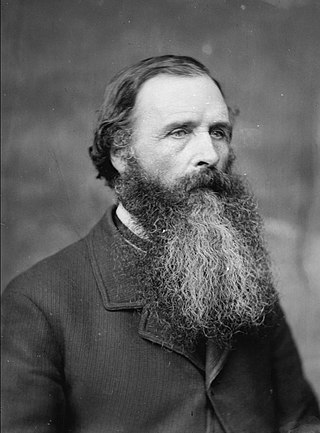Top Qs
Timeline
Chat
Perspective
Richard Owens (architect)
Welsh architect (1831–1891) From Wikipedia, the free encyclopedia
Remove ads
Richard Owens (1831 – 24 December 1891) was a Welsh architect, working mostly on urban housing in Liverpool, England and on the construction of chapels in Wales.
Background
Owens was born at Plas Bell, Y Ffôr, Pwllheli, the eldest son of Griffith Owens, a carpenter.[1]
After a period of primary education, he learned the carpenter's craft with his father and at the age of twenty, he went to Liverpool to work as a clerk and then as foreman to John Jones, a builder, in Everton. John Jones emigrated to the United States of America and Owens moved to Williams & Jones, Castle Street, Liverpool to a company that bought rural land around the old town of Liverpool to sell for housing developers. His main duties for Williams and Jones were to measure land and design plans.[2]
While working during the day, Owens also attended evening classes at the Institute of Engineering to learn more about architecture and design.[1]
Remove ads
Career
Summarize
Perspective

Owens began working as a freelance architect in 1862, among his first contracts being the building of a new place of worship for the Welsh Calvinistic Methodist congregation of Rose Place, Fitzclarence Street in Liverpool, where he was a member and which was the most expensive Welsh chapel (of similar historical value) to be built in the history of Welsh Nonconformity.[3] He subsequently designed over 250 other chapels for Welsh nonconformists,[1] of all denominations, throughout England and Wales, including the Baker Street chapels for the Congregationalists and the Calvinistic Methodist Tabernacle in Aberystwyth.[a][4]
While working on the design of Mynydd Seion chapel, Abergele in 1867, he came into contact with David Roberts & Co Company, Liverpool. The company were land surveyors and became dominant in Liverpool's housebuilding industry.[5] Through his collaboration with David Roberts, Owens designed over 10,000 terraced houses in the city of Liverpool, particularly those in the Toxteth area now commonly known as the Welsh Streets,[6] as many of the streets were named after Welsh towns and villages such as Voelas Street, Rhiwlas Street and Powis Street.[7] Ringo Starr was born in one of the Welsh Streets, in 9 Madryn Street and attended school in Pengwern Street. Owens also designed Roberts' corporate headquarters, Westminster Buildings, on Dale Street in the city.[5]
Owens was one of the most prolific architects of chapels in Wales[b][9] and terraced houses in Liverpool. According to Dan Cruickshank, the historian, "Owens was so successful he could be responsible for (planning) more terraced houses in Victorian Britain than anyone else".[10]
Remove ads
Personal

In 1858, Owens married Margaret Roberts, daughter of Hugh Roberts in Llanfairfechan and together they had 5 daughters and one son. Owens was known for a "somewhat abrasive" personality; visiting the site of his Presbyterian church in Caernarfon he was so annoyed at what he considered sub-standard workmanship on the entrance gates that he ordered them to be pulled down, describing them in a letter to the foundry master as "most slovenly done throughout" and described them as the worst specimen "of all the iron works that I ever had".[9]
He died at his home, 'Rhianfa' in Anfield Road, Liverpool at the age of 60 from gallstones and he was buried in Anfield Cemetery.[1]
Footnotes
- As an example of Owens' industry, he designed four chapels, for four different denominations, in Aberystwyth alone: the English Baptist Chapel, the English Presbyterian Church, the Seion Independent Chapel and the Tabernacle Calvinistic Methodist Chapel.[4]
- As well as working for congregations of different faiths, Owens undertook work in a range of architectural styles; in Caernarfon, his Engedi Calvinistic Methodist Chapel on New Street is Italianate while his English Presbyterian Church in Castle Square is "uncompromisingly Gothic".[8]
Remove ads
References
Sources
Wikiwand - on
Seamless Wikipedia browsing. On steroids.
Remove ads

